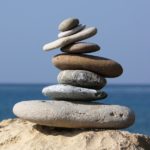Okay, Weekend Science Warriors! Milk Art Science is an easy, fun family lab that will wow children and adults alike.
Milk Art Lab supplies:
- Whole milk
- 4 colors of Liquid food coloring (red, blue, yellow, green)
- Q tip
- Dawn dish soap
- Small cup for soap (medicine cup works great)
- Flat salad plate
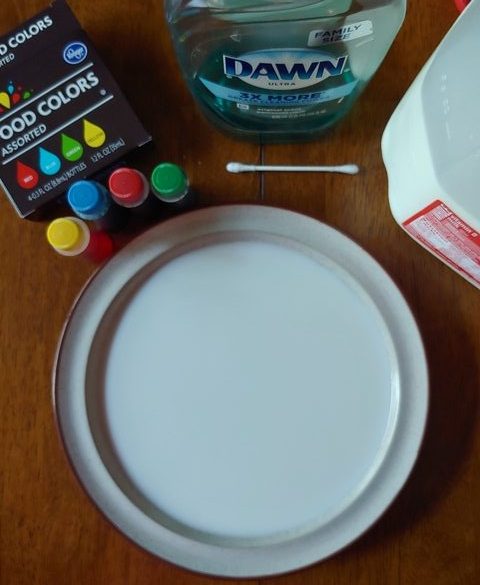
Lab Instructions:
- Pour milk into a flat dish.
- Drop 4 drops of each liquid dye from center out.
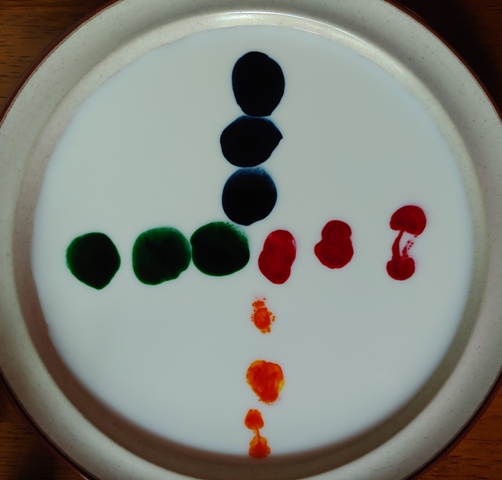
- Take the Q-tip and dip one end into the dish soap and place it in the center of the bowl.
- Watch what happens!
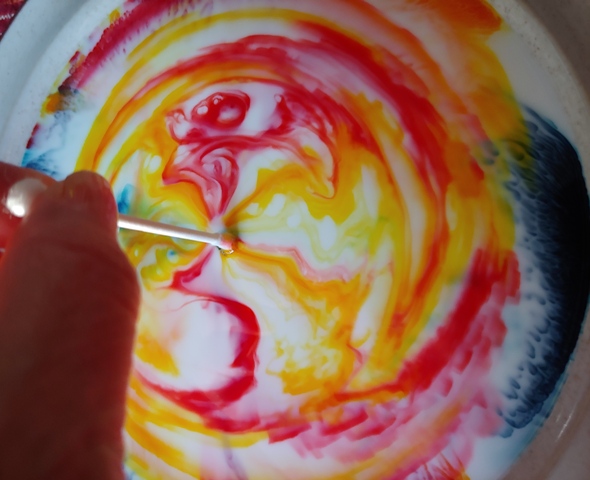
Take science a step further and ask ‘what if’ questions.
- What if:
- I try just two-color variations?
- Low fat milk or a heavier cream is used instead of whole milk?
- How will other milks behave like almond milk or goat milk?
- What if I use warm milk? While temperature affect the molecular activity?
- Will the reaction be different if I put food coloring droplets closer together or further apart?
- What if I sprinkle pepper on top of the milk and liquid dye colors?
Milk Art science can be used to study:
- Primary color mixing. (Using red and blue watch how purple forms.)
- Simulate the activity of ocean currents and eddies.
- The mixing of acids and bases. (Milk is at the low end of the pH acidic scale and dish detergent a strong base.)
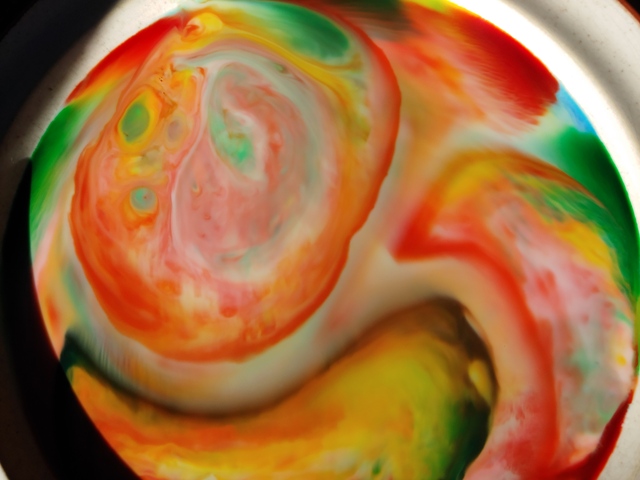
The “why” behind Milk Art:
Milk fat is suspended in tiny particles and they react to changes, especially when that change includes the chemistry of dish detergent. Milk fat molecules are connected with bonds. I tell my students to think of bonds like a group of friends holding hands. They like each other!
Dish soap however works great on greasy, oily dishes and works to break fat down. To get our dishes clean, the soap has to separate the hand-holding molecules. Need proof? When you add water to a greasy pan after dinner, place one drop of dish detergent in the middle and watch it clear the fat to the edges of the pan. As the milk fat lets go of hands (or releases the bonds) the action begins.
Once the soap molecules begin separating the fat bonds, the soap molecules rush around trying to join forces with the fat molecules. All this movement creates currents that move the liquid dye water molecules around so that the human eye can see all the activity happening.
The action slows down once the soap is thoroughly mixed with the milk fat molecules. At this point, you can add more detergent to try to create more action or start over with a new plate of milk and try a different color scheme!
Andrew had an Atomic Birthday Party when he turned 12. Check out Milk Science and our other labs!
Moving Mountains Daily on YouTube
*Reminder* This is a safe site for children. If not tastefully stated, your comment will disappear in a “POOF”!
